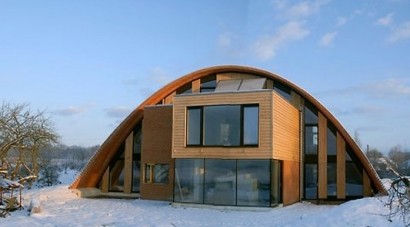
The IEA Technology Roadmap Energy-efficient Buildings: Heating and Cooling Equipment suggests that technologies such as solar thermal, heat pumps, thermal energy storage, and combined heat and power for buildings have the potential to reduce CO2 emissions by up to 2 gigatonnes (Gt) by 2050 - around a quarter of today's emissions from buildings - and save 710 million tonnes oil equivalent (Mtoe) of energy during the same period.
Much of the potential energy savings identified in the report could be achieved rapidly, both because the required technologies are available today and because heating and cooling equipment is typically replaced between 7 and 30 years - much more rapidly than the buildings themselves, which may last 30 to 100 years or more.
“Energy efficiency and CO2-free technologies for heating and cooling in buildings offer many low-cost options for reducing energy consumption, consumers' energy bills and CO2 emissions in buildings, with technologies that are available today,” said Bo Diczfalusy, the IEA's Director of Sustainable Energy Policy and Technology.
“Given that space heating and cooling and hot water production consume perhaps half of all energy consumed in buildings today, the savings potential is very large," Diczfalusy said.
The IEA prepared the roadmap in consultation with representatives of government, industry, academia and non-governmental organizations.
The document provides an overview of the current status of different mature, commercially available heating and cooling equipment, as well as emerging technologies. It charts a course for expanding the deployment of these technologies to 2050 with the ambitious goal of completely transforming the market for heating and cooling in buildings.
Strong policy action is required
The report recommends urgent action to overcome widespread market barriers to the deployment of heating and cooling equipment that is energy-efficient and emits less or even no CO2.
Government policies must be both "broad" enough to address specific barriers (for instance, by raising awareness on the part of workers who install building equipment) and "deep" enough to reach all of the stakeholders in the fragmented building sector (for instance, by aligning the incentives for building developers with future owners).
"Governments need to create the economic conditions that will enable heating and cooling technologies to meet environmental criteria at least cost," Diczfalusy said. "The challenge is significant given the very fragmented nature of the buildings sector and the difficulty of ensuring that effective policy reaches all decision makers."
If those making the decision to buy heating and cooling equipment are not given adequate incentives to address the environmental costs of energy use, they are unlikely to make optimal decisions from an economic and environmental perspective.
However, even if the environmental costs are built into energy prices, many non-cost market barriers to more efficient and low- and zero-carbon heating and cooling technologies remain.
These barriers mean that addressing the unique challenges of the buildings sector will require a package of policy measures and strong, consistent, stable and balanced policy support in the following four main areas:
The key technologies are already available
The roadmap shows how to achieve a complete transformation of heating and cooling in buildings and of providing hot water.
By 2050, the policies advocated could cut fossil fuels' share in useful space and water heating to between 5% and 20% (depending on region) from today's position of dominance, while the global average efficiency of cooling systems would more than double.
The report focuses on four key technology options for heating and cooling in buildings: Other technologies and fuels play a small but important role (for example, biomass).
As part of the transformation outlined in the roadmap, the total number of installed heat pumps in the residential sector would grow from around 800 million today to nearly 3.5 billion by 2050.
Solar thermal capacity would increase by more than 25 times today's level to reach 3 743 GWth by 2050, while capacity of distributed CHP in buildings would be 45 times greater than today's level, reaching 747 GWe in 2050. By 2050, half of all space heating and hot water systems would be equipped with thermal energy storage.
For additional information:

